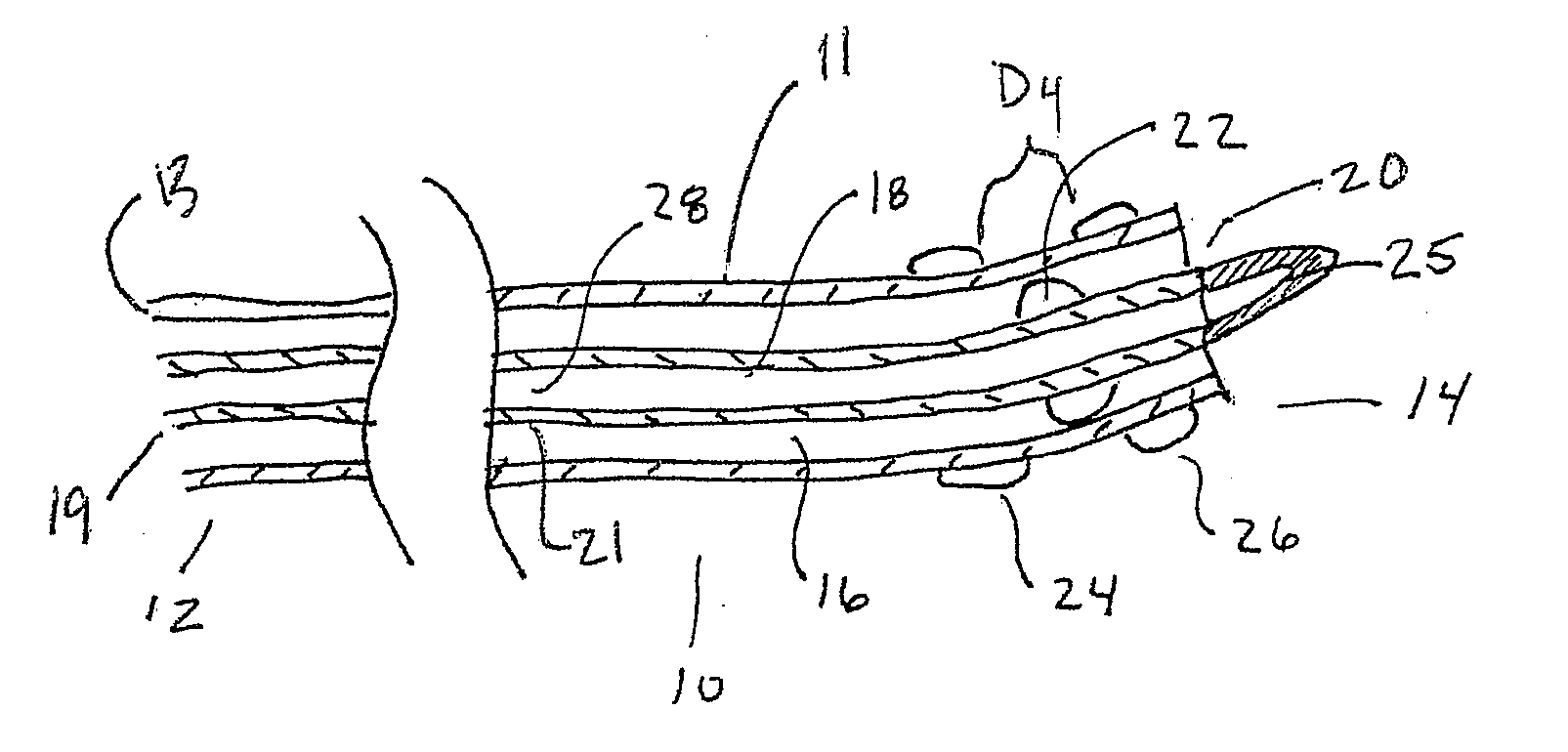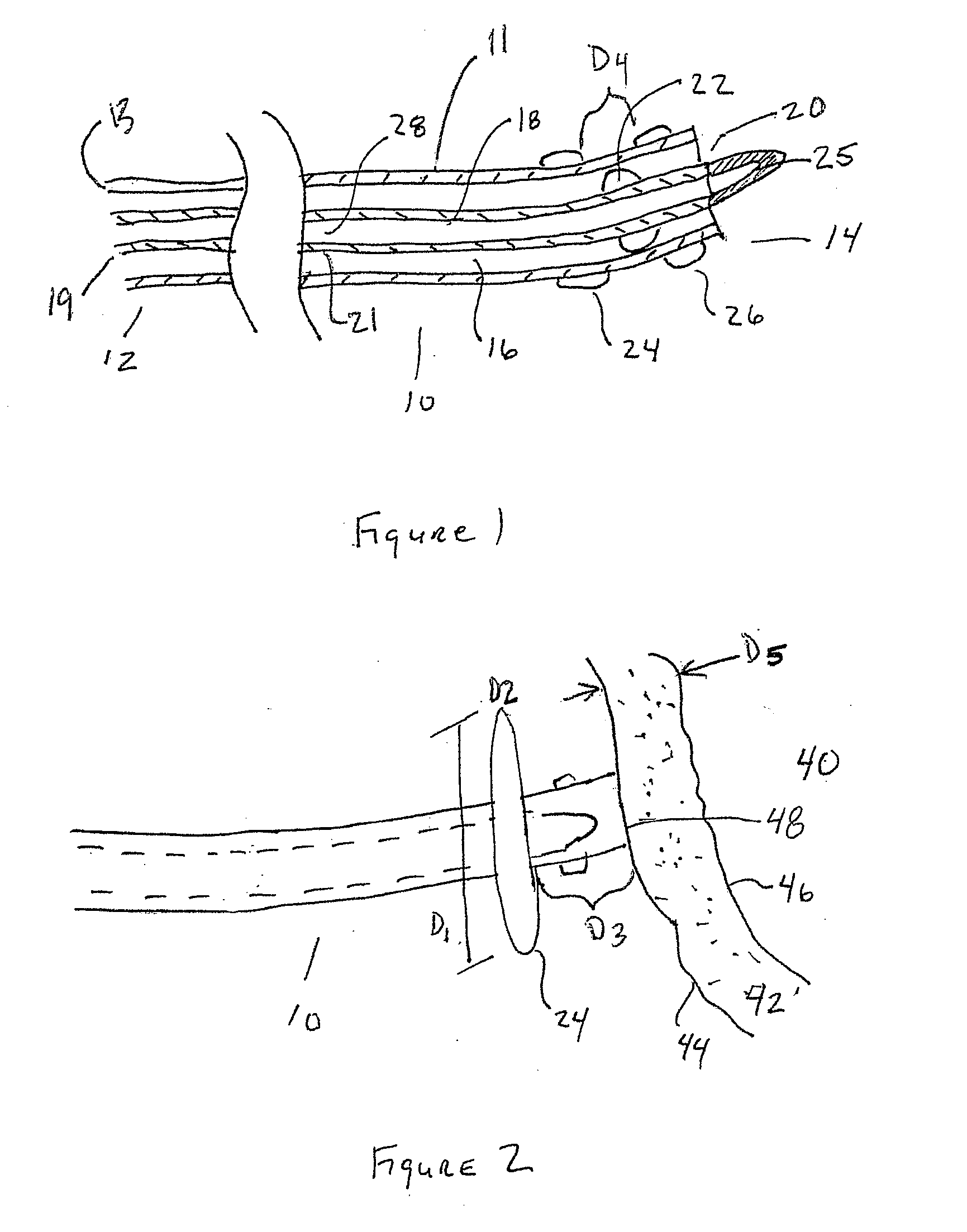Trans Urinary Bladder Access Device and Method
a technology of access device and urinary bladder, which is applied in the field of trans urinary bladder access device and method, can solve the problems of inability to access an anatomical cavity from a remote natural body orifice that may be non-sterile or may be made non-sterile by the introduction of instruments from outside the natural orifice, and the ability to access an anatomical cavity from a remote natural body orifice that is often difficult to achiev
- Summary
- Abstract
- Description
- Claims
- Application Information
AI Technical Summary
Benefits of technology
Problems solved by technology
Method used
Image
Examples
Embodiment Construction
[0062]Although several different methods of accessing anatomical cavities in the body have been described and used, particularly laparoscopic procedures that access the abdominal cavity through the skin, a better least invasive device and method for performing least invasive procedures through natural body orifices is needed. These procedures take advantage of the natural orifice so that no outward incision or scar is necessary. These procedures also may require less recovery time and may be quicker to perform.
[0063]However accessing body cavities through the esophagus, rectum, uterus, bladder or other natural body orifices (NO) has other challenges. Devices and methods that utilize these points of entry into the body are often entering a sterile environment such as the peritoneum from a non-sterile or potentially non-sterile environment. Therefore it is important that the initial access site be sterile and that the site remains sterile after the procedure has been completed and the...
PUM
 Login to View More
Login to View More Abstract
Description
Claims
Application Information
 Login to View More
Login to View More - R&D
- Intellectual Property
- Life Sciences
- Materials
- Tech Scout
- Unparalleled Data Quality
- Higher Quality Content
- 60% Fewer Hallucinations
Browse by: Latest US Patents, China's latest patents, Technical Efficacy Thesaurus, Application Domain, Technology Topic, Popular Technical Reports.
© 2025 PatSnap. All rights reserved.Legal|Privacy policy|Modern Slavery Act Transparency Statement|Sitemap|About US| Contact US: help@patsnap.com



